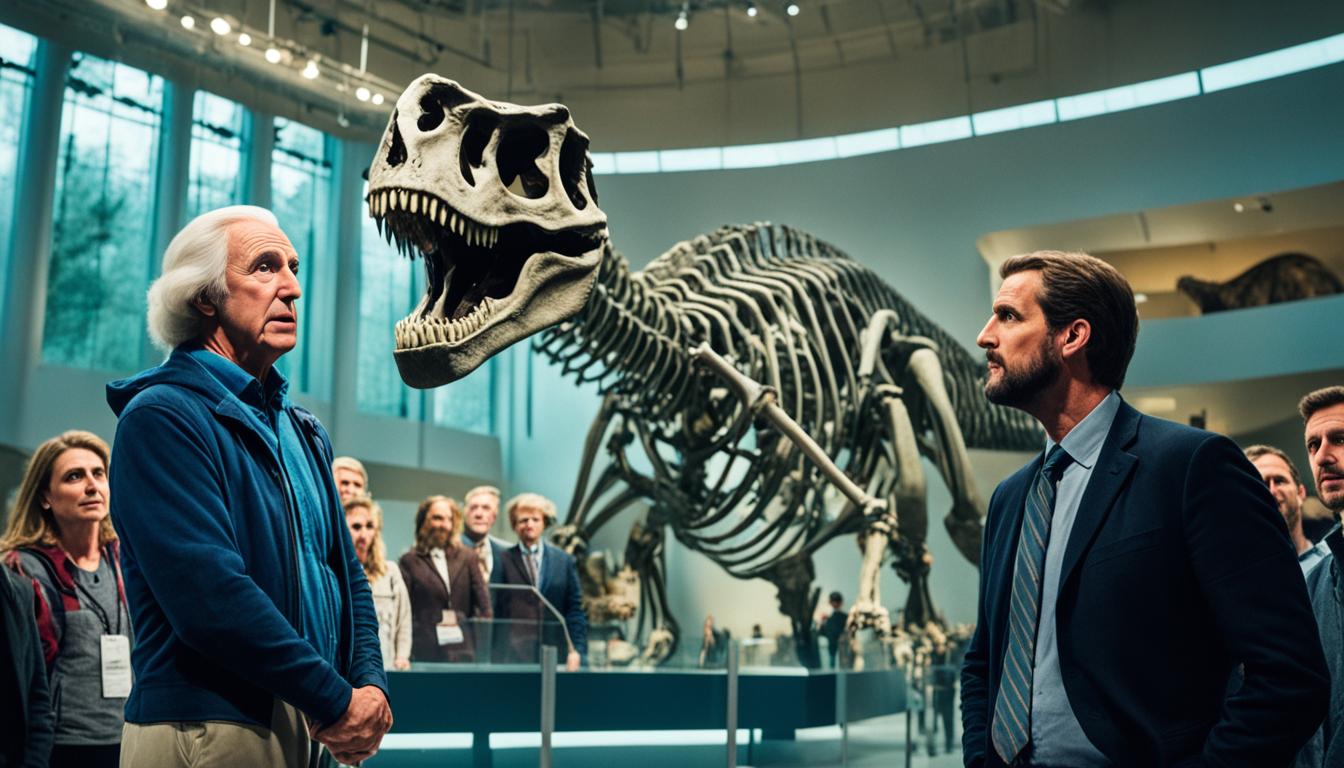In the annals of history, it may come as a surprise to learn that George Washington, the first President of the United States, lived and died before the discovery of dinosaurs. Despite his renowned leadership and pivotal role in shaping the nation, Washington’s understanding of the Earth’s ancient past was limited by the scientific knowledge of his time. The field of paleontology, which would later shed light on the existence of these magnificent prehistoric creatures, was still in its infancy during Washington’s lifetime.
Born in 1732 and passing away in 1799, George Washington’s life preceded the groundbreaking discoveries that would revolutionize our understanding of the planet’s history. In the late 18th century, the prevailing belief was that giant humans once roamed the Earth, a misconception based on the misinterpretation of fossilized remains. It wasn’t until several decades after Washington’s death that the true nature of these fossils would be revealed, forever altering our perception of the distant past.
Key Takeaways
- George Washington lived and died before the discovery of dinosaurs
- Paleontology was still in its early stages during Washington’s lifetime
- The concept of dinosaurs emerged several decades after Washington’s death
- Fossils were initially misinterpreted as remains of giant humans
- Washington’s understanding of Earth’s ancient past was limited by the scientific knowledge of his time
The Concept of Dinosaurs Emerged After Washington’s Death
The notion of dinosaurs as we know it today did not exist during George Washington’s lifetime. While fossil evidence of these ancient reptiles had been discovered as early as 1677, when English naturalist Robert Plot described the femur of a megalosaurus, the concept of dinosaurs had not yet been established. At the time, Plot theorized that the mysterious bone belonged to a race of giant humans rather than an extinct animal.
It wasn’t until the 1820s, several decades after Washington’s death in 1799, that geologists began to reexamine the giant bone theory. They proposed that these fossils belonged to ancient reptiles rather than mammals. This shift in thinking marked the beginning of the development of the dinosaur concept as a distinct group of prehistoric creatures.
As more fossil evidence was uncovered and studied in the following years, the understanding of these ancient reptiles grew, eventually leading to the coining of the term “dinosaur” in 1842 by English paleontologist Richard Owen. The dinosaur concept continued to evolve as scientists pieced together the characteristics and diversity of these fascinating creatures that once roamed the Earth millions of years ago.
Washington Predated Dinosaur Discovery
In the grand historical timeline, George Washington’s life and death occurred well before the groundbreaking dinosaur discovery that revolutionized our understanding of Earth’s ancient past. Washington, the first President of the United States, passed away in 1799 at the age of 67. At that time, the concept of dinosaurs had not yet entered the scientific lexicon or captured the public’s imagination.
It is fascinating to consider that even the last surviving signer of the Declaration of Independence, Charles Carroll, who died in 1832 at the remarkable age of 95, did not live to witness the coining of the term “dinosaur” or the subsequent discoveries that would shed light on these magnificent prehistoric creatures. The idea of extinct reptilian giants roaming the Earth millions of years ago was still beyond the realm of scientific understanding during the lifetimes of Washington and his contemporaries.

The field of paleontology, which would eventually unearth the remains of dinosaurs and piece together their fascinating history, was still in its infancy during Washington’s era. It would take several more decades after Washington’s death for the first dinosaur fossils to be recognized and studied, setting the stage for a profound shift in our perception of the planet’s ancient past and the incredible creatures that once inhabited it.
The Coining of the Term “Dinosaur” in 1842
While the existence of ancient, fossilized creatures was known during George Washington’s lifetime, the term “dinosaur” had not yet been coined. It wasn’t until 1842, over four decades after Washington’s death, that English paleontologist Richard Owen formally introduced the term to the scientific community.
Owen, a prominent figure in the field of paleontology, derived the word “dinosaur” from the Greek words “deinos,” meaning terrible or fearfully great, and “sauros,” meaning lizard. He used this term to describe the group of large, extinct reptiles whose fossils had been discovered in England and other parts of Europe. Owen’s groundbreaking work laid the foundation for our modern understanding of these prehistoric beasts.
Interestingly, the creation of the term “dinosaur” occurred a full decade after the death of Charles Carroll, the last surviving signer of the Declaration of Independence. This means that not only did George Washington predate the discovery of dinosaurs, but so did all of the nation’s Founding Fathers. The concept of dinosaurs as we know it emerged long after the birth of the United States.

Leave a Reply